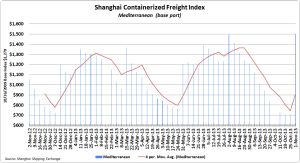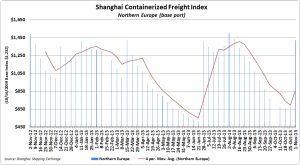AMENDMENTS TO THE SUPPLEMENT TO THE IOPP CERTIFICATE FORM A
(SHIPS OTHER THAN OIL TANKERS) AND FORM B (OIL TANKERS)
1 The existing Section 3 of the Supplement to the IOPP Certificate, Form A and Form B, is
replaced by the following:
“
3 Means for retention and disposal of oil residues (sludge) (regulation 12) and oily
bilge water holding tank(s)∗
3.1 The ship is provided with oil residue (sludge) tanks for retention of oil residues (sludge)
on board as follows:
Tank location
Tank identification
Frames (from)-(to) Lateral position
Volume (m3)
Total volume: …… m3
3.2 Means for the disposal of oil residues (sludge) retained in oil residue (sludge) tanks:
3.2.1 Incinerator for oil residues (sludge), maximum capacity kW or kcal/h (delete as
appropriate) ......................................................................................................................
3.2.2 Auxiliary boiler suitable for burning oil residues (sludge)..................................
3.2.3 Other acceptable means, state which ...................................................................
3.3 The ship is provided with holding tank(s) for the retention on board of oily bilge water as
follows:
Tank location
Tank identification
Frames (from)-(to) Lateral position
Volume (m3)
Total volume: …… m3
”
∗ Oily bilgewater holding tank(s) are not required by the Convention; if such tank(s) are provided they shall be
listed in Table 3.3.
2 The term “(double bottom requirements)” at the end of paragraph 5.8.2 of Form B is deleted.
3 Paragraphs 5.8.5 and 5.8.7 are replaced by the following:
“
5.8.5 The ship is not subject to regulation 20 (check which box(es) apply):
.1 The ship is less than 5,000 tonnes deadweight □
.2 The ship complies with regulation 20.1.2 □
.3 The ship complies with regulation 20.1.3 □”
“5.8.7 The ship is not subject to regulation 21 (check which box(es) apply):
.1 The ship is less than 600 tonnes deadweight □
.2 The ship complies with regulation 19 □
(Deadweight tonnes ≥ 5,000)
.3 The ship complies with regulation 21.1.2 □
.4 The ship complies with regulation 21.4.2 □
(600 ≤ Deadweight tonnes < 5,000)
.5 The ship does not carry “heavy grade oil” as defined □”
in regulation 21.2 of MARPOL Annex I
4 Delete paragraph 6.1.5.4 from the Supplement to the International Oil Pollution
Prevention Certificate, Form B.
Annex 3
AMENDMENTS TO THE OIL RECORD BOOK PARTS I AND II
1 Sections (A) to (H) of the Oil Record Book Part I are replaced by the following:
“(A) Ballasting or cleaning of oil fuel tanks
1 Identity of tank(s) ballasted.
2 Whether cleaned since they last contained oil and, if not, type of oil previously carried.
3 Cleaning process:
.1 position of ship and time at the start and completion of cleaning;
.2 identify tank(s) in which one or another method has been employed (rinsing through,
steaming, cleaning with chemicals; type and quantity of chemicals used, in m3);
.3 identity of tank(s) into which cleaning water was transferred and the quantity in m3.
4 Ballasting:
.1 position of ship and time at start and end of ballasting;
.2 quantity of ballast if tanks are not cleaned, in m3.
(B) Discharge of dirty ballast or cleaning water from oil fuel tanks referred to under
Section (A)
5 Identity of tank(s).
6 Position of ship at start of discharge.
7 Position of ship on completion of discharge.
8 Ship’s speed(s) during discharge.
9 Method of discharge:
.1 through 15 ppm equipment;
.2 to reception facilities.
10 Quantity discharged, in m3.
(C) Collection, transfer and disposal of oil residues (sludge)
11 Collection of oil residues (sludge).
Quantities of oil residues (sludge) retained on board. The quantity should be recorded
weekly1: (this means that the quantity must be recorded once a week even if the voyage
lasts more than one week):
.1 identity of tank(s)
.2 capacity of tank(s) ................................................................................... m3
.3 total quantity of retention ........................................................................ m3
.4 quantity of residue collected by manual operation ................................. m3
(Operator initiated manual collections where oil residue (sludge) is transferred
into the oil residue (sludge) holding tank(s).)
1 Only those tanks listed in item 3.1 of Forms A and B of the Supplement to the IOPP Certificate used for oil
residues (sludge).
12 Methods of transfer or disposal of oil residues (sludge).
State quantity of oil residues transferred or disposed of, the tank(s) emptied and the
quantity of contents retained in m3:
.1 to reception facilities (identify port)2;
.2 to another (other) tank(s) (indicate tank(s) and the total content of tank(s));
.3 incinerated (indicate total time of operation);
.4 other method (state which).
(D) Non-automatic starting of discharge overboard, transfer or disposal otherwise of
bilge water which has accumulated in machinery spaces
13 Quantity discharged, transferred or disposed of, in m3.3
14 Time of discharge, transfer or disposal (start and stop).
15 Method of discharge, transfer, or disposal:
.1 through 15 ppm equipment (state position at start and end);
.2 to reception facilities (identify port)2;
.3 to slop tank or holding tank or other tank(s) (indicate tank(s); state quantity
retained in tank(s), in m3).
(E) Automatic starting of discharge overboard, transfer or disposal otherwise of bilge
water which has accumulated in machinery spaces
16 Time and position of ship at which the system has been put into automatic mode of
operation for discharge overboard, through 15 ppm equipment.
17 Time when the system has been put into automatic mode of operation for transfer of bilge
water to holding tank (identify tank).
18 Time when the system has been put into manual operation.
(F) Condition of the oil filtering equipment
19 Time of system failure4.
20 Time when system has been made operational.
21 Reasons for failure.
(G) Accidental or other exceptional discharges of oil
22 Time of occurrence.
23 Place or position of ship at time of occurrence.
24 Approximate quantity and type of oil.
25 Circumstances of discharge or escape, the reasons therefor and general remarks.
2 The ship’s master should obtain from the operator of the reception facilities, which includes barges and tank
trucks, a receipt or certificate detailing the quantity of tank washings, dirty ballast, residues or oily mixtures
transferred, together with the time and date of the transfer. This receipt or certificate, if attached to the
Oil Record Book Part I, may aid the master of the ship in proving that the ship was not involved in an alleged
pollution incident. The receipt or certificate should be kept together with the Oil Record Book Part I.
3 In case of discharge or disposal of bilge water from holding tank(s), state identity and capacity of holding
tank(s) and quantity retained in holding tank.
4 The condition of the oil filtering equipment covers also the alarm and automatic stopping devices, if applicable.
(H) Bunkering of fuel or bulk lubricating oil
26 Bunkering:
.1 Place of bunkering.
.2 Time of bunkering.
.3 Type and quantity of fuel oil and identity of tank(s) (state quantity added,
in tonnes and total content of tank(s)).
.4 Type and quantity of lubricating oil and identity of tank(s) (state quantity added,
in tonnes and total content of tank(s)).”
2 Section (J) of the Oil Record Book Part II is replaced by the following:
“(J) Collection, transfer and disposal of residues and oily mixtures not otherwise dealt with
55 Identity of tanks.
56 Quantity transferred or disposed of from each tank. (State the quantity retained, in m3.)
57 Method of transfer or disposal:
.1 disposal to reception facilities (identify port and quantity involved);
.2 mixed with cargo (state quantity);
.3 transferred to or from (an)other tank(s) including transfer from machinery space
oil residue (sludge) and oily bilge water tanks (identify tank(s); state quantity
transferred and total quantity in tank(s), in m3); and
.4 other method (state which); state quantity disposed of in m3.”
***


